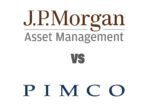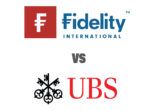Simpson, a former fund manager, focuses exclusively on fixed income as part of Mercer’s global research team, and private banking clients select funds based on his research.
CoCos, he explained, are bonds issued by banks that can be written off or converted into equity if capital at the issuing bank drops below a specified level.
“The bank hits a trigger and suddenly the investor could lose the principal or is left holding bank equity,” he explained.
Banks may issue CoCo bonds to raise capital reserves and meet Basel III requirements. Others may be saddled with non-performing loans and need the additional capital.
Several Chinese banks are offering CoCos and the Bank of China said it intends to offer up to $15bn worth of the instruments.
In Asia, private banks, pressured to deliver high yield products to meet client demand, are buying CoCos. However, some buyers do not fully consider the consequences down the line, he said.
“Some private banks buy it and lever it up and get a 14% yield on Bank of China paper, for example. You have to ask, what could go wrong with these bonds?
“You look at Chinese banks and the non-performing loans are very small. Why do they need this subordinated capital if they’re not expecting big losses? You could say it’s prudent for them to do so, but you never really know.”
Simpson said Asian investors are more open to CoCos because they tend to invest in fixed income for return rather than looking for a safe asset class to hold.
In Europe, CoCos are generally considered too risky, he said. The UK has even prohibited banks from offering CoCos to the mass market.
“In Europe, if a bank is performing badly that normally means the economy is in trouble and that’s when you want your fixed income portfolio to perform well.
“So if you start converting bonds to equity in the bank because it’s performing poorly, that sounds like a disaster.”
The rise of fixed income
Speaking generally about fixed income allocation, Simpson is advising clients to pare down positions to the level of a “defensive backstop”.
“We’d never advocate going to zero [in fixed income] because if things go wrong, that is one of the few asset classes that perform well.”
Private banks in Asia have become very big buyers in the fixed income market, he said.
“In the past, maybe they would buy a bond fund but now they buy bonds for investors directly. Anything with high yield tends to appeal to them and some haven’t really thought about risk. Institutional managers are worried that at some point money is coming out of certain names.
“A lot of people invested here in Asia for yield, and the worry is if they think US interest rates are going up, the capital will be repatriated. You don’t need lots of people to do that to have a real impact on the market. It would introduce a lot more volatility to markets in Asia.”
He said he was surprised that the fixed income allocation given to private banks in some deals is very high in Asia versus other parts of world.
“It shows how popular the asset class has become. We’re starting to see Asia become a much bigger part of the fixed income market. Before 2008, it was miniscule.”
In the global context, certain China fixed income products look attractive, Simpson said.
In China, an AA rated government bond, which is just below the US rating, can bring a 4% yield, he said. The US ten-year yield is 2.5%.
“China’s currency is also incredibly stable. Over time people will look to invest a lot more in China, which is just opening now through the QFII and RQFII programmes.
EM debt trend
Mercer’s internal reports show client buying trends have reflected continual increases in emerging market debt allocation for the past couple years, he said.
“High yield emerging market debt can bring good returns with a lot less volatility than equities. That appeals to some institutions and more are moving into it.”
The trend is expected to continue, especially since expectations are that US rates go to 2-2.5%.
“No one is talking about the base rate going to 5%, so in the Western world, interest rates will likely be structurally low for a long time. That makes these kind of investments more attractive for people who want to take a little risk out of the portfolio and spread it around different asset classes.”
















